Bulgaria, For a Quiet Life With Plenty to Explore
Upon arriving in Bulgaria, the first thing that struck us was the noticeable absence of tourists. In an era where mass tourism permeates nearly every corner of the globe, discovering such a peaceful country was both surprising and, in many ways, refreshing. The calm atmosphere allowed us to fully appreciate the locales, connect with the people, and immerse ourselves in the authenticity of the surroundings.
During our trip, we visited the capital, Sofia, and the city of Plovdiv.
General Overview
Bulgaria is a Southeast European nation covering approximately 110,994 km², with a population of around 6.8 million people as of 2024 [1] . This results in a population density of about 62 inhabitants per km². It shares borders with Romania, Serbia, North Macedonia, Greece, Turkey, and has a coastline along the Black Sea. The capital city is Sofia.

Strategically positioned between Central Europe and Asia, Bulgaria’s history and culture have been shaped by a blend of Slavic, Ottoman, and Balkan influences.
This unique combination makes Bulgaria an intriguing yet underexplored destination.
A Noteworthy Fact: The Cyrillic Alphabet
Bulgaria is the birthplace of the Cyrillic alphabet, developed in the 9th century by Saints Cyril and Methodius. Today, it remains the official script of the country and is used in several other Slavic nations.
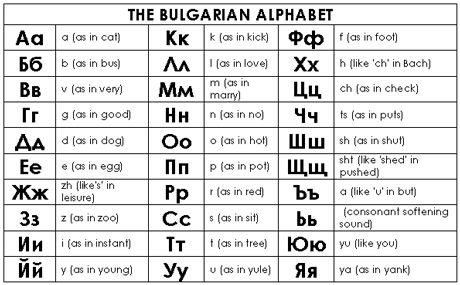
The Bulgarian Diaspora
Before the fall of the communist regime, Bulgaria’s population was nearing 9 million. Currently, it stands at approximately 6.8 million [2] . This significant decline is attributed to low birth rates and substantial emigration, particularly after the 1990s, with many Bulgarians relocating to EU member states and North America. The diaspora is estimated to be between 2.5 and 3 million people.
Sofia: The Capital City
Sofia, with a population of approximately 1.25 million, derives its name from the Church of Saint Sophia, mirroring the Hagia Sophia in Istanbul.
Sofia experiences a humid continental climate. Winters are relatively cold and snowy, while summers are warm and sunny. Due to its higher altitude, the city generally remains slightly cooler than other parts of Bulgaria during the summer.
We visited in May and, after a sunny first day, spent the remainder of our stay under rain and chilly weather. Nevertheless, we found the city to be warm and welcoming.
Transportation and Mobility
Sofia boasts a comprehensive public transportation system, including a metro, trams, and buses. The city center is easily navigable on foot, and despite the relatively calm traffic, cycling isn’t widespread, partly due to the limited number of dedicated bike lanes.
Accommodation and Local Atmosphere
We stayed near a central boulevard, which allowed us to move around the city effortlessly and soak in the local ambiance. The streets are lined with cafés, small shops, and terraces where people gather leisurely, free from the hustle typical of other European capitals.
Exploring Sofia
Our first activity in the city was a walking tour through the city center.

We would have liked to take a sightseeing bus, but as we mentioned earlier, there are very few tourists—and no tourist buses at all. Nevertheless, walking through the city center was a very rewarding experience. The streets are full of history, and every corner has a story to tell.
Sofia, the capital, is quite surprising.
Unlike many other European cities, it doesn’t have a traditional old town. The modern city was built on the ruins of the ancient one, so what exists today is a relatively modern urban area, whose development began in the early 20th century.
The city center stands out for its wide avenues, which allow for smooth traffic flow. However, there are two particularly striking features.
First, the lack of traffic lights and pedestrian crossings. On most streets, pedestrians can cross almost anywhere, and surprisingly, cars usually stop to let them pass. Even so, it’s unusual to find so few marked crosswalks in a European capital.
Second, the yellow cobblestones that pave some central streets. These cobblestones have an interesting history: they were a gift from the Austro-Hungarian Empire to King Ferdinand on the occasion of his wedding. Although it’s not entirely clear whether they were a true gift or actually paid for, they certainly add a distinctive charm to the city. They are said to be slippery, but we didn’t find them particularly so.
In the city center, two main types of architecture stand out:
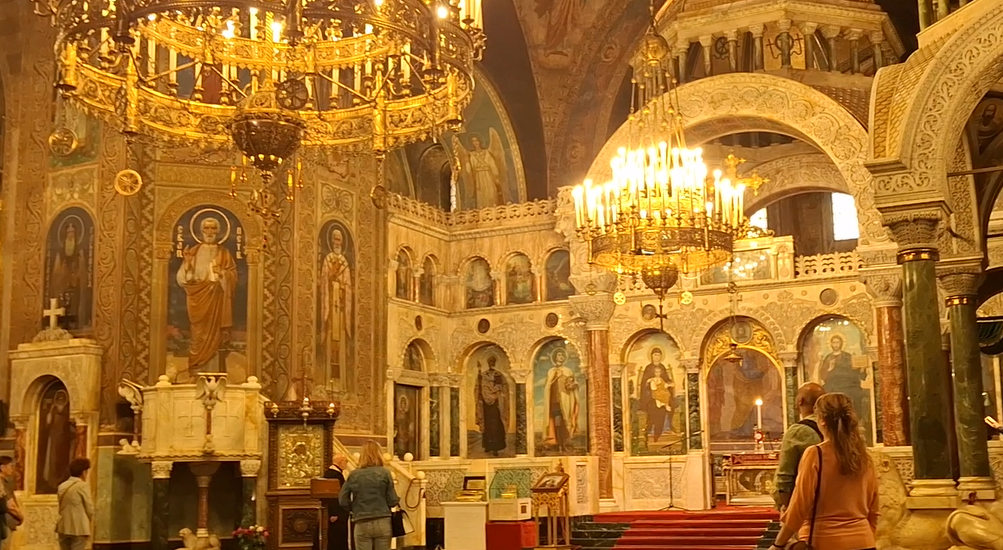
Pre-communist buildings, such as the Alexander Nevsky Cathedral and various palaces, which are truly beautiful and reflect a more classical and refined style.

Communist-era constructions, which follow a more austere, functional, and uniform design, characteristic of countries that experienced that kind of regime. This architectural contrast gives the city a unique identity.
In neighborhoods further from the center, one can find some modern buildings, but also less developed areas.
Another pleasant surprise was the abundance of parks and green spaces.
Overall, Sofia is a calm and livable city—free of tourists, traffic jams, and with a very appealing historic center.
Cost of Living in Bulgaria
One of the things that stood out most to us is how affordable life is here. Bulgaria is, without a doubt, one of the cheapest countries in the European Union. Although it is part of the EU, it does not yet use the euro as its official currency. Instead, it uses the lev (plural: leva). The exchange rate is simple: 1 euro ≈ 2 leva. This makes everything — from food and accommodation to transport — significantly cheaper than in many other European countries.
To better understand the cost of living, keep in mind that the average monthly salary in Bulgaria is around €1,000.
We recommend checking local supermarkets like Lidl or Kaufland for up-to-date prices and offers. You can visit their websites and use a browser translator to view the content in English.
Housing & Utilities in Sofia
Prices are approximate and can vary based on location and property condition.
- Properties for rent
3-bedroom apartment (outside centre) €710
- Property Purchase Prices in Sofia
Apartments (peripheral districts) €1,600–€1,900 Average Price per m² in Euros
We recommend visiting these websites and using a browser translator to view the content in English.
BulgarianProperties.com
Property.BG.bg
RealEstate.bg
BestBulgarianProperties.com
Imoti.net
Imot.bg
Domaza.bg
Homes.bg
Bazar.bg
Exploring Plovdiv: Bulgaria’s Timeless Cultural Gem
Plovdiv, Bulgaria’s second-largest city, is a captivating blend of ancient history and vibrant modern culture. Recognized as one of Europe’s oldest continuously inhabited cities, its roots trace back over 8,000 years.
Old Town & Roman Heritage
The Old Town of Plovdiv is a treasure trove of historical architecture and archaeological wonders. Visitors can marvel at well-preserved Roman ruins, including the Ancient Theatre of Philippopolis, which dates back to the 1st century AD and is still used for performances today . The city’s rich tapestry includes Thracian, Roman, Byzantine, and Ottoman influences, evident in landmarks like the medieval Hisar Kapia gate and the ancient Nebet Tepe fortress.
Main Street & City Vibes
Plovdiv boasts one of Europe’s longest pedestrian streets, stretching approximately 1.75 kilometers . Lined with shops, restaurants, and historical buildings, it’s perfect for a leisurely stroll. The city’s relaxed atmosphere and friendly locals make it an inviting destination for travelers seeking both culture and comfort.
Kapana Art District
Adjacent to the Old Town lies the Kapana district, known as “The Trap” for its maze-like streets. Once a hub for craftsmen, it has transformed into a lively arts quarter filled with galleries, cafes, and artisan shops. The district hosts various cultural events and festivals, making it a vibrant spot for both locals and tourists.
Other Must-Visit Destinations in Bulgaria
Black Sea Coast
While we didn’t explore the Black Sea region on this trip, it’s renowned for its beautiful beaches and resort towns like Sunny Beach. Historically, during the communist era, many Bulgarians enjoyed state-sponsored vacations along the coast. Today, some locals find the area pricey and opt for more affordable destinations like Turkey. Nonetheless, the Black Sea coast remains a popular summer getaway.
UNESCO World Heritage Sites
Bulgaria is home to several UNESCO World Heritage Sites, including:
– Rila Monastery: A stunning example of Eastern Orthodox architecture nestled in the Rila Mountains.
– Boyana Church: Famous for its well-preserved medieval frescoes near Soofia.
– Nesebar: An ancient town on the Black Sea coast known for its rich history and architecture. These sites offer a glimpse into Bulgaria’s diverse cultural and historical heritage .


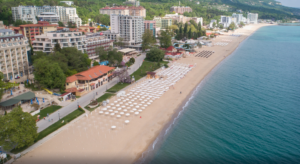
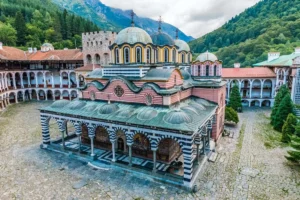
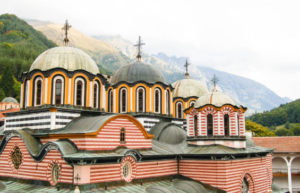


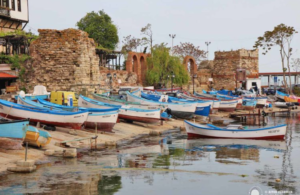
Communism in Bulgaria: Historical Context and Public Sentiment
Political System (1946–1989):
Bulgaria was officially a communist state, though it referred to itself as a socialist republic. From 1946 to 1989, it was known as the People’s Republic of Bulgaria and was ruled by the Bulgarian Communist Party, closely aligned with the Soviet Union.
Public Sentiment:
Many Bulgarians express nostalgia for the communist era. Life was perceived as quiet and secure. While wealth accumulation was restricted, basic needs were met: people typically had an apartment, a job, a car (often after a long wait), and, if affordable, a second home. Unemployment was virtually nonexistent, and education and healthcare were free. For those who conformed to societal norms, life was peaceful.
Transition Challenges:
The shift from a communist to a capitalist economy was challenging. Many felt disillusioned with capitalism and democracy, leading to significant emigration once borders opened.
A recent survey revealed:
– 32.6% of Bulgarians preferred living during the socialist period
– 28.1% favored the democratic era.
– 9.5% wished to live during the pre-comunism era.
This nostalgia often stems from perceptions of greater economic stability and social security during the communist era, despite its authoritarian nature.
Meet Locals

To meet local people, we recommend checking city hall websites and similar sources to find the daily agenda of events. You can also explore platforms where people announce social gatherings, such as:
– Internations, which has an active Sofia community with over 16,000 members
– Meetup, where you can also find a wide range of activities and groups
Final Thoughts
If you’re seeking an affordable, tranquil lifestyle enriched with history, culture, and natural beauty, Bulgaria is a compelling choice. With its mild climate, organic cuisine, and welcoming communities, it offers a unique experience for travelers and potential residents alike.

